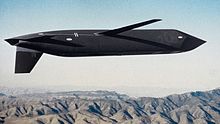
The AGM-129 ACM (Advanced Cruise Missile) was a low-observable, subsonic, turbofan-powered, air-launched cruise missile originally designed and built by General Dynamics and eventually acquired by Raytheon Missile Systems. Prior to its withdrawal from service in 2012, the AGM-129A was carried exclusively by the US Air Force's B-52H Stratofortress bombers.
In 1982 the US Air Force began studies for a new cruise missile with low-observable characteristics after it became clear that the AGM-86B cruise missile would have difficulty penetrating future air defense systems. The AGM-86B relied on low-altitude flight to penetrate the Soviet air defense system centered on surface to air missiles. The deployment of the airborne early warning systems, together with the Zaslon PESA radar on Mig-31 and Myech radar on Su-27 interceptors, all three "look-down/shoot-down" radars, reduced the likelihood that the low-altitude AGM-86B would reach its target.
The solution was to incorporate various "low-observable" ('stealth') technologies into a new Advanced Cruise Missile system.